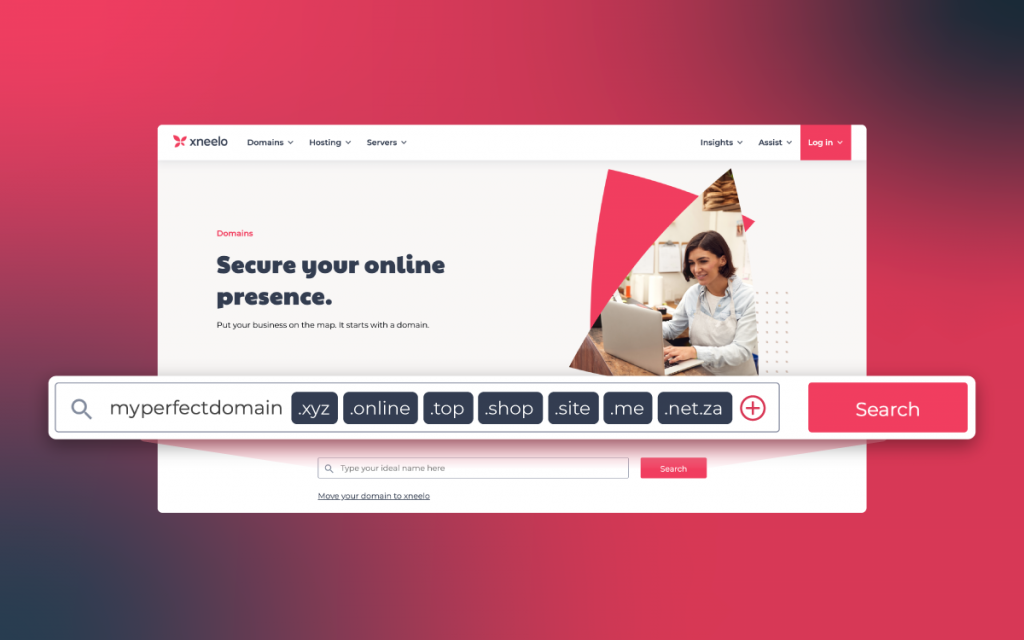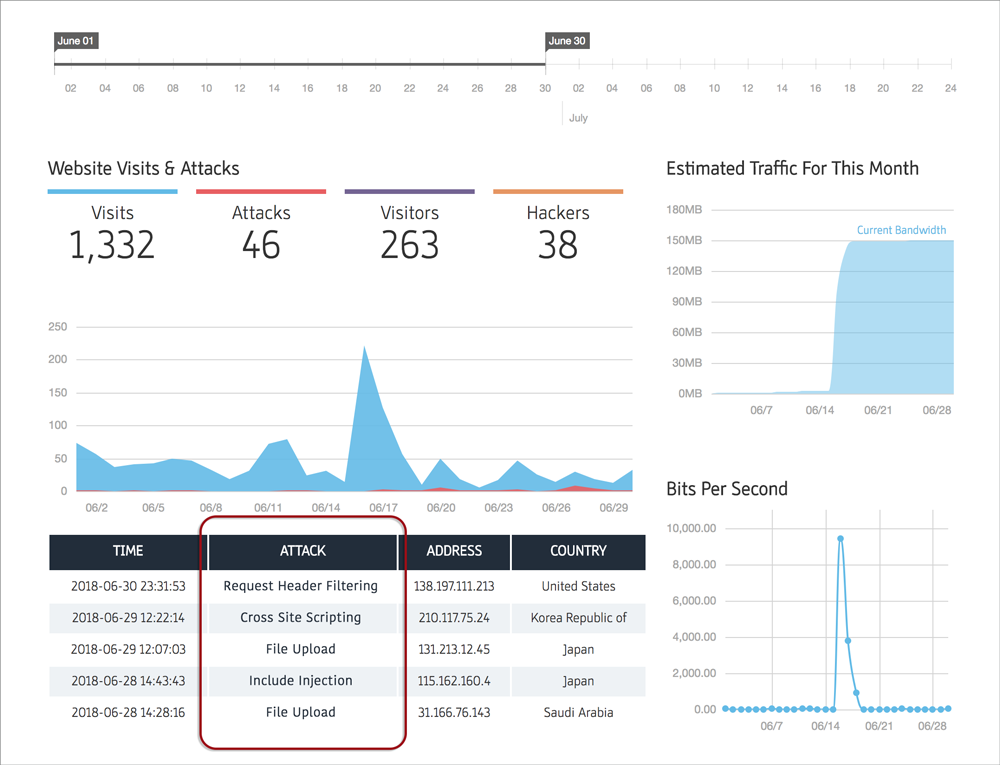What are the attacks on the Cloudbric WAF dashboard?
Your Cloudbric WAF dashboard displays the types of attack blocked on your website by month. Filter the dates that you want to analyse to see your total website visits compared to the attempted hack attacks.
In the below example you can see that during this month there were a variety of hack attacks on this website (Include Injection, Cross Site Scripting, Identity Theft, etc).
Types of web attacks, their purposes and implications
- Buffer Overflow: Triggers server overrun by excessive data input beyond its capacity.
- Cookie Poisoning: Modifies cookie settings of web visitors.
- Cross Site Scripting: Redirects visitors to phishing sites or extracts their information by malicious code insertion in a web server.
- Directory Listing: Attempts to disclose directory structure in a server.
- Directory Traversal: Tries to move to a higher directory through unicode vulnerability.
- HTTP DoS: Continuously sends abnormal requests to cause server malfunction.
- Stealth Commanding: Involves code execution, which can allow a hacker to take over the server.
- Error Handling: Intentionally causes server-side errors in order to investigate server information
- Extension Filtering: Tries to upload a file with suspicious file extensions.
- File Upload: Tries to upload malware onto a server.
- Improper Contents: Sends improper strings/contents to the server.
- Include Injection: Redirects visitors to other unrequested sites by inserting malicious code in the server.
- Invalid HTTP: Causes an error by sending an abnormal HTTP request form.
- Invalid URL: Could cause error by requesting an abnormal URI to the server.
- Parameter Tampering: Sends parameter values that were not originally requested by the web server or manipulates parameters sent from the web server.
- Privacy File Theft: Steals sensitive information found in private files.
- Privacy Input Filtering: Uploads sensitive information files to a web server.
- Request Header Filtering: Discloses server information or causes server-side error by sending abnormal request headers.
- Request Method Filtering: Potentially shuts down the server by sending abnormal request methods.
- Response Header Filtering: Exposes web server data due to attacks focusing on information included in HTTP Response.
- User Defined Pattern: Malicious attack pattern requests identified by Cloudbric WAF.
- SQL Injection: Inserts malicious SQL queries in a website in order to access unauthorized data in a database.
- Suspicious Access: Continuously sends abnormal requests.
- URL Access Control: Attempts to gain access to certain URIs and files.
- Website Defacement: Attempts to deface or vandalize a website.
Cloudbric WAF detects and constantly monitors these suspicious activities and blocks all malicious attacks.
You may be interested in Why a hacker wants your website







